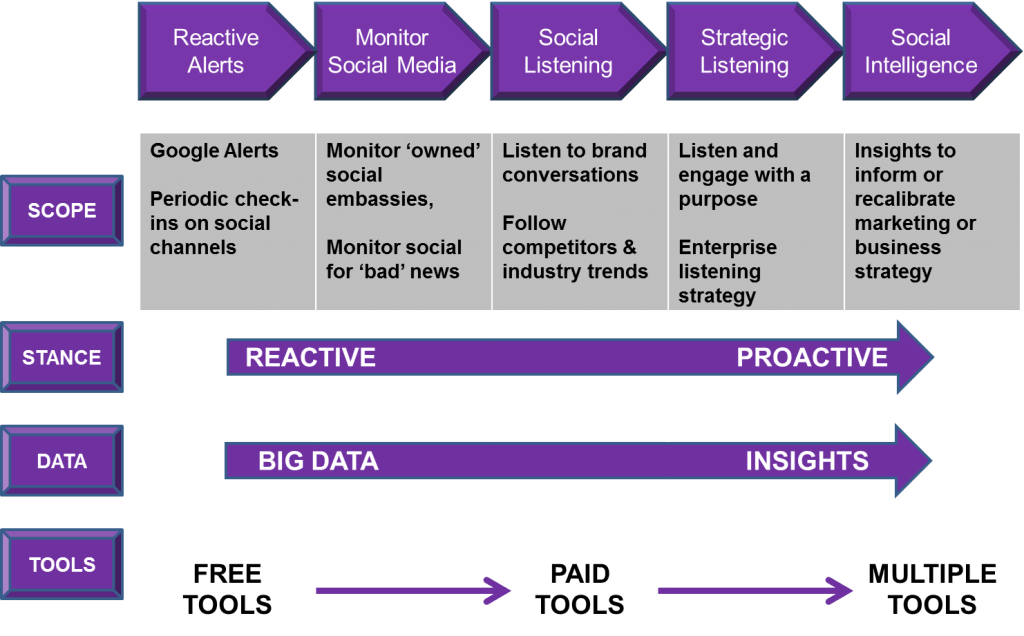Social media paves a way for brands to interact with customers, keep pace with the current trends, and gather competitive insights. With the advent of tools like Big Data, we have data flowing in from various sources, paving the way for dynamic inputs and plenty of business drivers. Align your business goals clearly to the social data collated for good customer insights.
Learn how to improve your results by using the social media intelligence life cycle effectively. Haven’t heard of the social intelligence lifecycle? Social media intelligence lifecycle is the process of social media data mining. The ultimate goal of a social media analytics and business analytics is the same. Both these frameworks help us to implement plans effectively and achieve the bottom lines. Strictly speaking, all social media marketing efforts should be directed towards achieving either a cost impact or value impact.

Source: https://metricsman.wordpress.com/category/social-media-measurement/
Steps in the Social Media Intelligence lifecycle
In the lifecycle, first comes extraction of relevant data. The scope of data extraction is two-folds. In the case of brand or campaign monitoring, the scope would be posts from the entire social media universe that match a set of keywords. Whereas, when the due diligence of data collation is done with respect to operations like performance measurement or competitive intelligence, the scope would be social profile specific.
After extraction, the analysis of data stage comes into play. You try to clean and make sense of the collated data. There are multiple checkpoints during the analysis stage like volume trend analysis, assigning ranks to posts and profiles, etc. These two stages in the lifecycle constitute the social media listening program. As the name suggests, this program is basically to understand the nuances of the social media data collated. This aids us in making strategic decisions. The next stage in the analytics lifecycle is to incorporate the analysed data and encourage customer participation. This is done to get feedback on changes made after the analysis stage, with the social media process. Once there is engagement then there is no looking back at your strategy. Give special attention to the engagement phase which will lead to meaningful insights in your social media strategy. This marks the end of the assessment phase of the lifecycle.
Now that we have introduced the analytics framework, the next post would focus on various social media tools based on the lifecycle stages explained.


